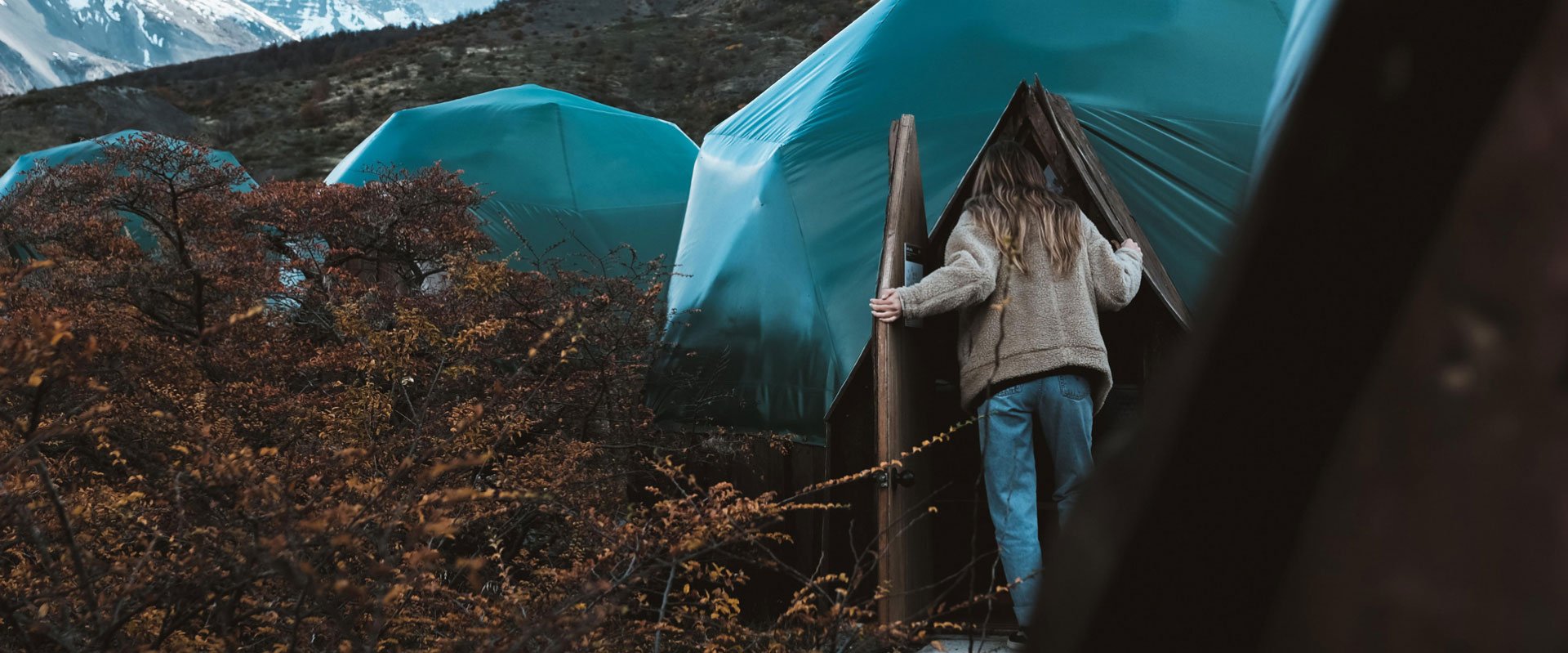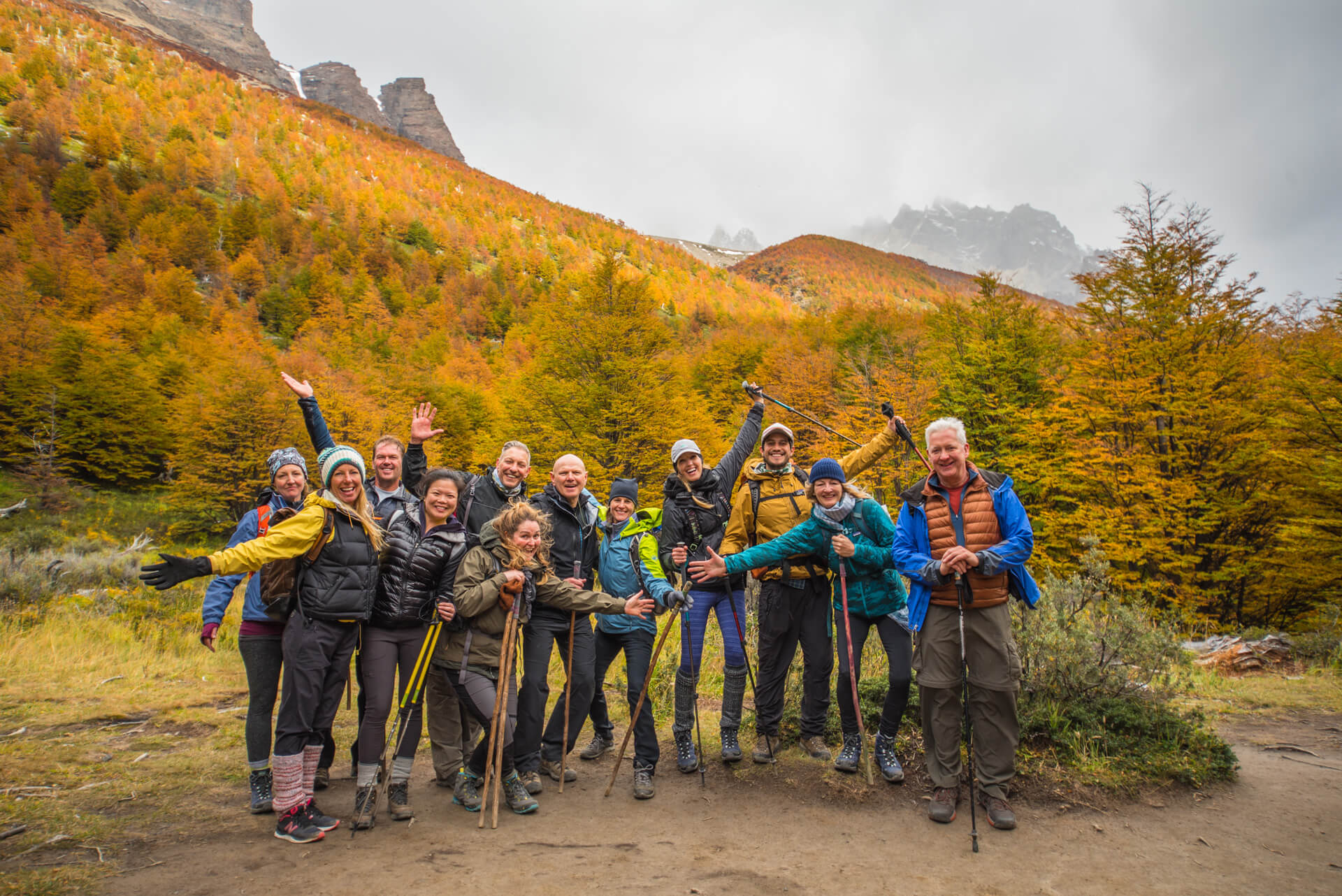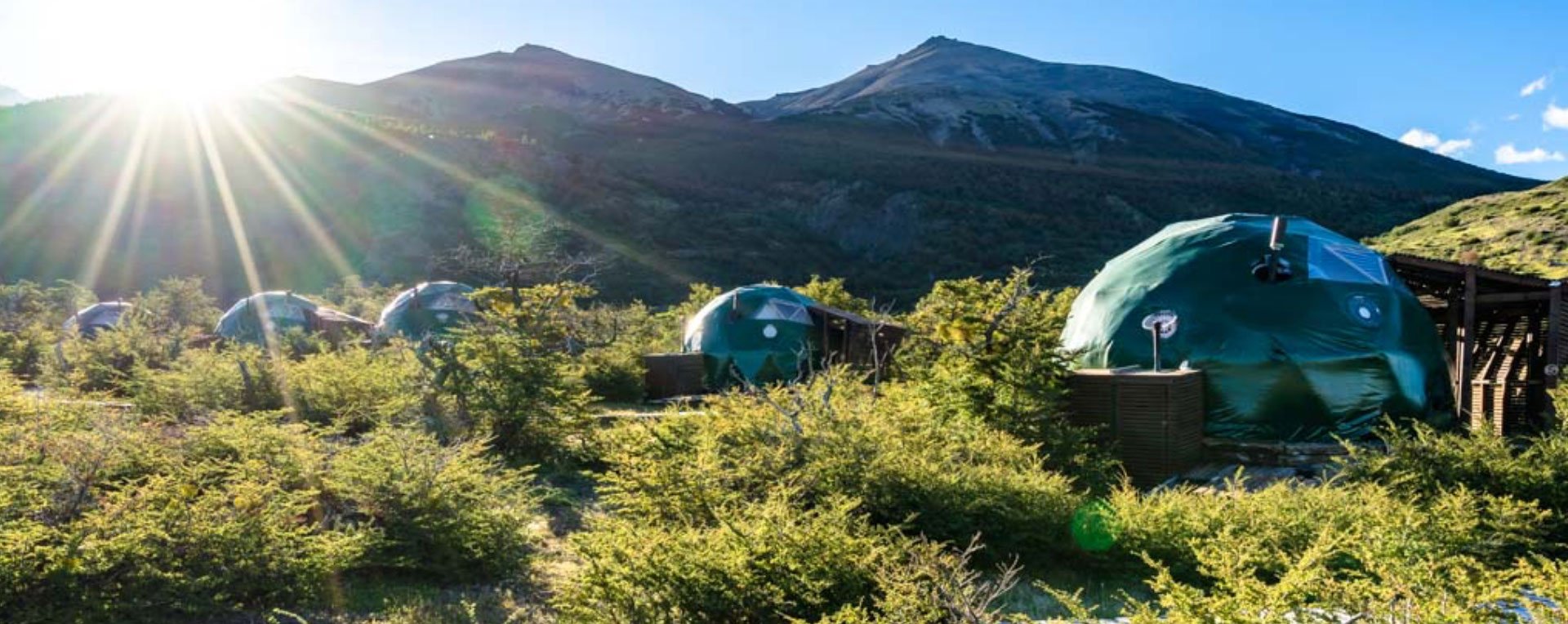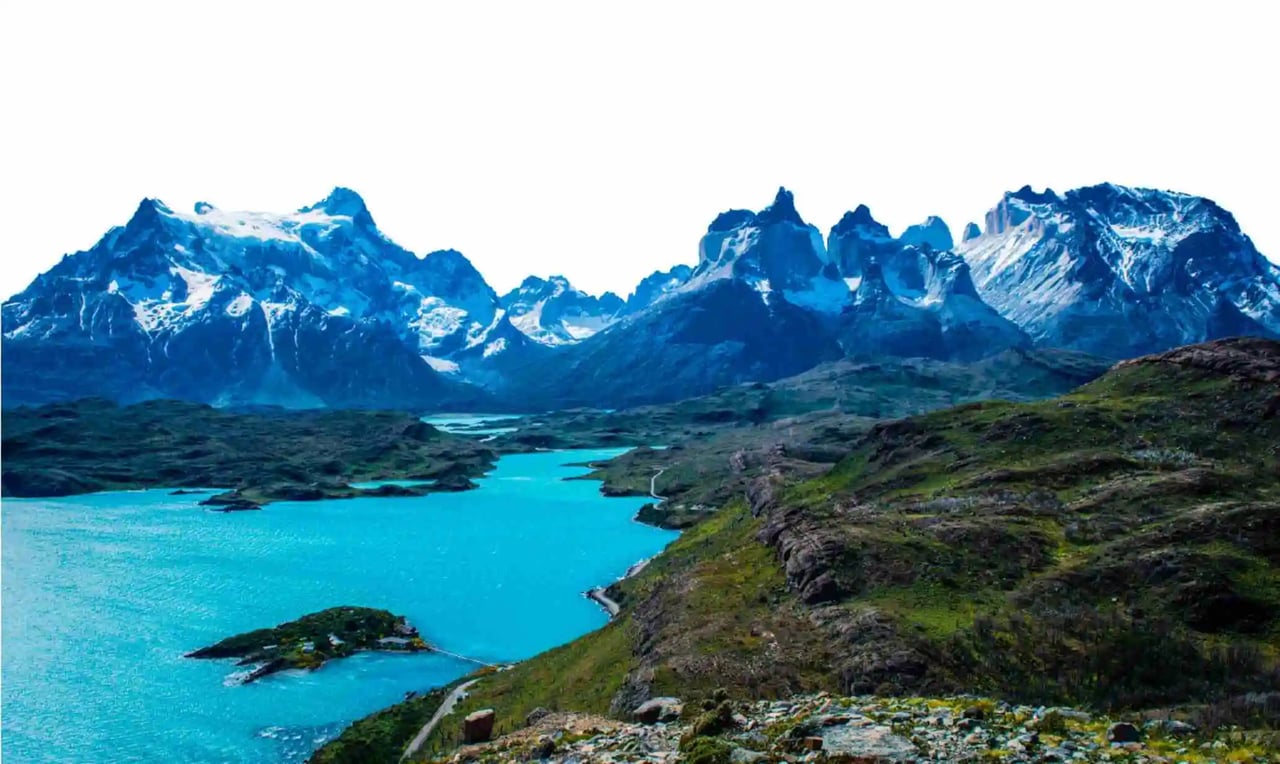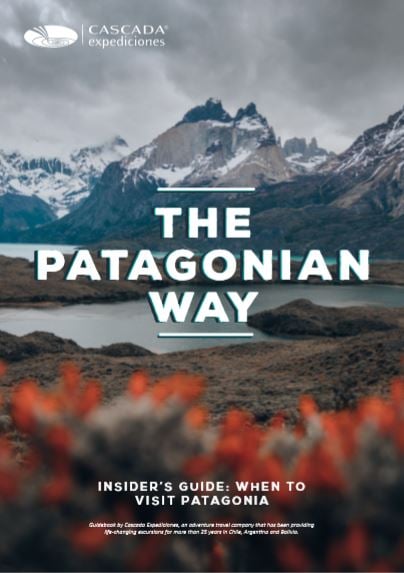Everything in the Southern Patagonian Ice Fields is phenomenal and the figures speak for themselves. As we were walking on a rocky beach, the guide (whose attire was the same color as the nearby glacier) started mentioning astounding information about the Southern Patagonian Ice Field. 16,800 km2 of ice. 48 glaciers. The third largest reserve of fresh water in the world – after Antarctica and the Arctic. Wow, that sounded big! Perito Moreno – with its 250km2 – was one of only three Patagonian glaciers that are not receding.
We traipsed through the superb lenga trees, the most common tree species in Patagonia. The contrast between the lush green of the forest and the piercing blueness of the ice monster on our right side was seizing. The birds were chirping loudly. The terrifying boom of a detonation wave suddenly echoed in the mountains. The group of people shouted in unison. We felt the earth shaking, but that was no earthquake. A huge chunk of ice had just broken off the glacier and fallen into water. A glacial calving: that was such an unforgettable sound! Soon after, the waves broke onto the beach. With my eyes wide open, I quickly remembered I was about to hike on one of the biggest - and most alive - glaciers in South America.
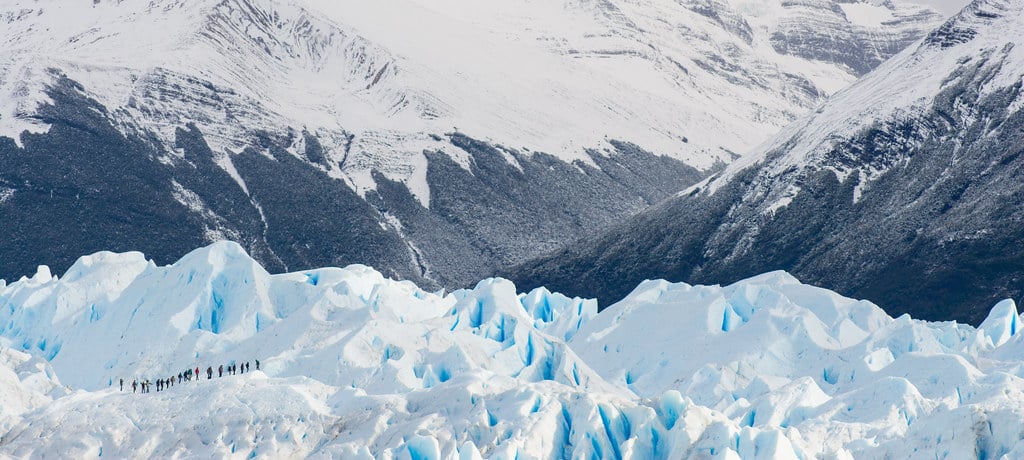 It's crazy how insignificant we humans are, isn't it?
It's crazy how insignificant we humans are, isn't it?7:00am.
Through the window, I could see the vastness of Lago Argentino, the biggest lake in Argentina.
Pink dots in the distance betrayed the presence of flamingos. No wind at all: it was a peaceful morning in the Far south. After a hearty breakfast, the bus picked me up at the hotel for a 1h30 (80km/49mi) drive through the arid pampa. El Calafate was well and awake, with heaps of fellow travelers waiting for their transportation to witness the magic of Los Glaciares National Park.
El Calafate seemed to be lost in the Patagonian desert.
Despite its proximity to the Ice Field, the surroundings of the 21.500-inhabitants city were surprisingly dry, and I knew sunshine here in Calafate could mean snowstorm on the ice fields. Ah, Patagonia and its crazy weather! As we went through the entrance door to this unmissable area of Argentina, I prayed it wouldn’t rain. Average precipitations in the Southern Patagonian Ice Fields are 7000mm/year (VS 150mm/year in El Calafate!) and, with infamous winds that can eventually reach 100mph/160km/h, bringing an umbrella is…ugh…well…not really a good idea.
I knew, however, that such strong winds were common but not constant, so I felt confident as the first mountains appeared. We passed Los Glaciares National Park’s entrance after an hour’s drive, as strange UFO-like clouds floated in sky above us. A UNESCO World Heritage Site, Los Glaciares NP houses pristine surroundings with all the Patagonian ecosystems you can imagine, from the western Patagonian steppe biodiversity to the splendor of the subpolar forest. Argentina’s 2nd largest national park (726,927ha) will never bore you. Further north, it extends to El Chalten, the national hiking capital. But today, instead of hiking along peaks from another world (such as the famous Monte Fitzroy), we would meet equally otherworldly glaciers!
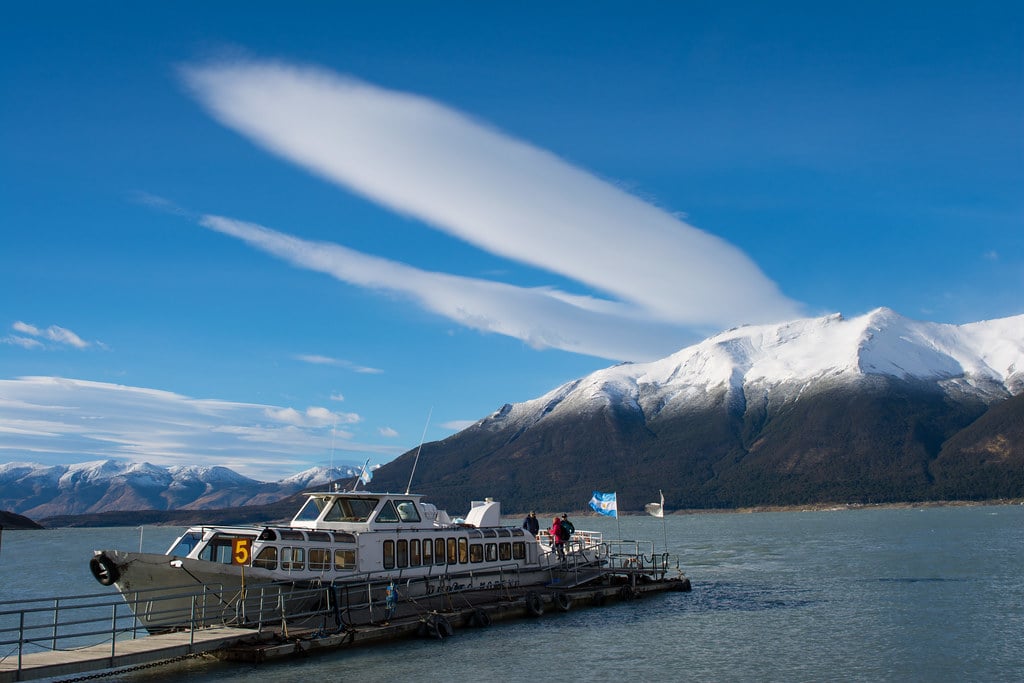 Our taxi to the ice...
Our taxi to the ice...We reached the pier at 10:00am. Kim, a friendly–smiling–adventurous woman from Canada, could not believe the sunshine. She had been hiking the W Trek in Torres del Paine National Park for 7 days, where she was never treated to such peaceful weather. We entered the small boat together, talking about the crazy experience we were about to do embark upon. As the boat was making its way to the landing stage, we discovered Perito Moreno. The giant ice wall (up to 80m/3.3feet tall) looked even bigger from the boat’s terrace! The 30 minute trip was short and led us to the foot of the lenga forest, only a few dozen meters from the ice field. It wasn’t even freezing (and barely cold!).
We met our blue-attire guides for an uncommon briefing.
It was hard to stay focused on the information in such an incredible setting! Looking at the scenery, I was surprised to see how close the forest was to the ice. The guides seemed to have heard the voice in my head and immediately answered my question: the hugeness of the ice cap made it possible for the glaciers to begin at 1,500m (4900ft) A.M.S.L., unlike other areas in the world (where they reside at a minimum of 2500m/8200ft). Here, the glaciers slide down to 200m (660ft), allowing them to converse with the forests (and letting us access them easily)!
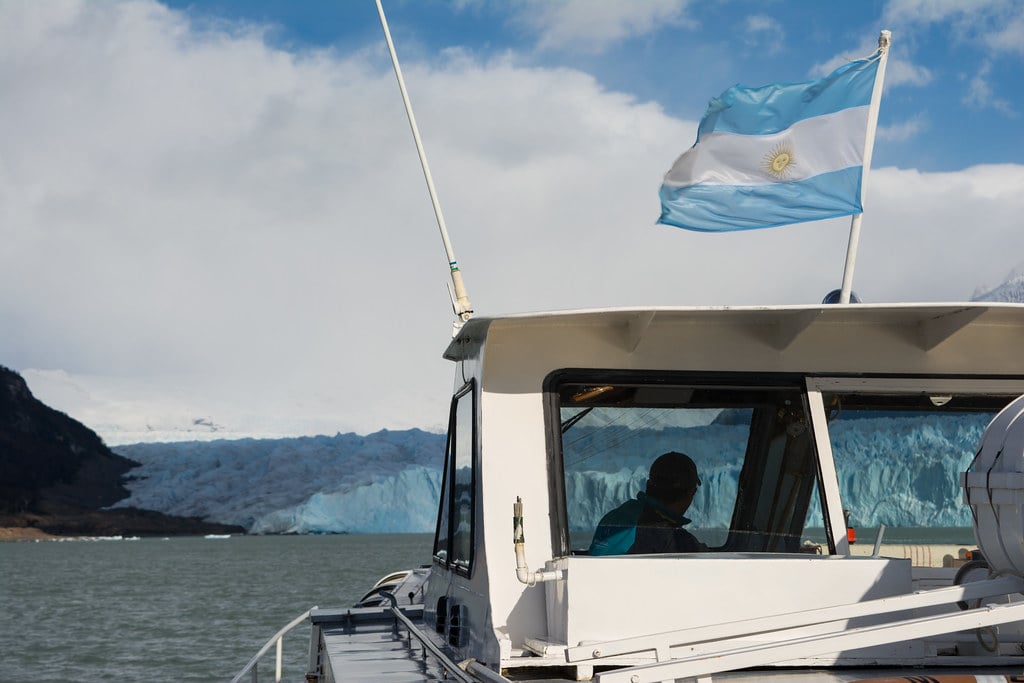 No doubt about it: we are in Argentina!
No doubt about it: we are in Argentina!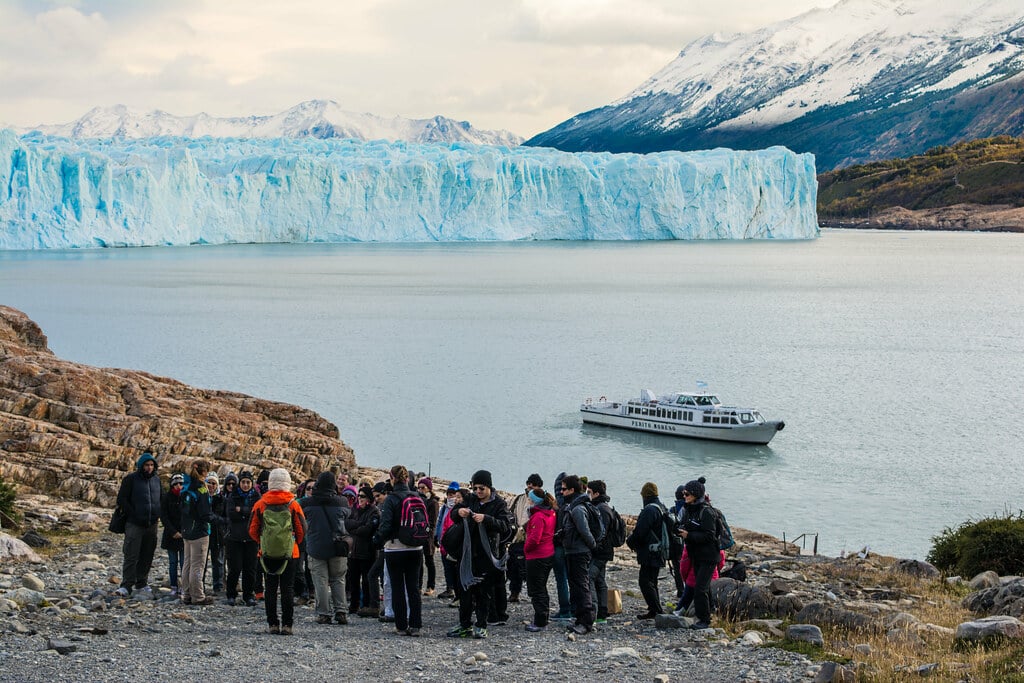 I told you: that's an uncommon place for a briefing!
I told you: that's an uncommon place for a briefing!We divided ourselves into 2 smaller groups and took the wooden path through the forest where we observed the friendly woodpeckers looking for insects in the tall lenga trees (yum!). We quickly reached the foot of the ice monster (now it indeed felt cold). Kim laughed at me when the guides fit my large feet for crampons. It was like traveling back in time when the first explorers stepped on the Patagonian glaciers in the 18th century. Crampons had been invented in Europe in the 16th century: now they had become something common worldwide, allowing anyone from 12 years old to walk on some of the most stunning glaciers on Earth.
It was our turn to set on the ice!
I followed Kim and the rest of the group on the ice cap. An assistant guide was frantically digging on the ice with a pickaxe to erect steps on the glaciers. Well, it was quite easier than in the 18th century…It almost felt like walking on the rock. I followed the guides’ instructions: raising the left knee, stepping on the ice, raising the right knee, etc. No reason to fall if you walk with all your weight!
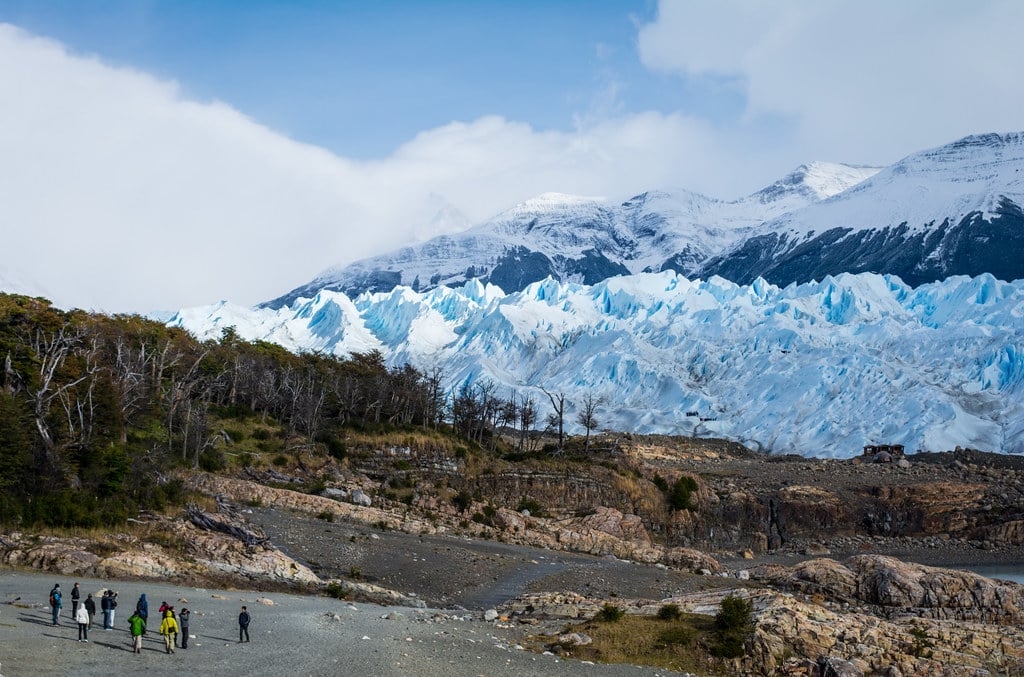 A cold yet cool beach!
A cold yet cool beach!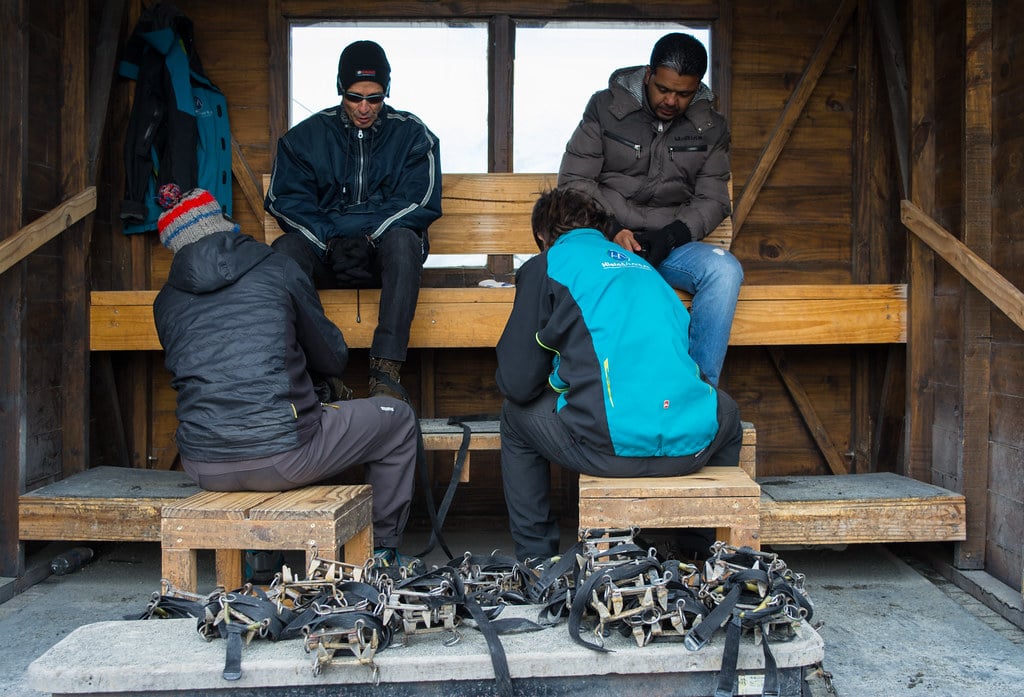 Don't know how to put on crampons? Don't worry, the guides will do it for you!
Don't know how to put on crampons? Don't worry, the guides will do it for you!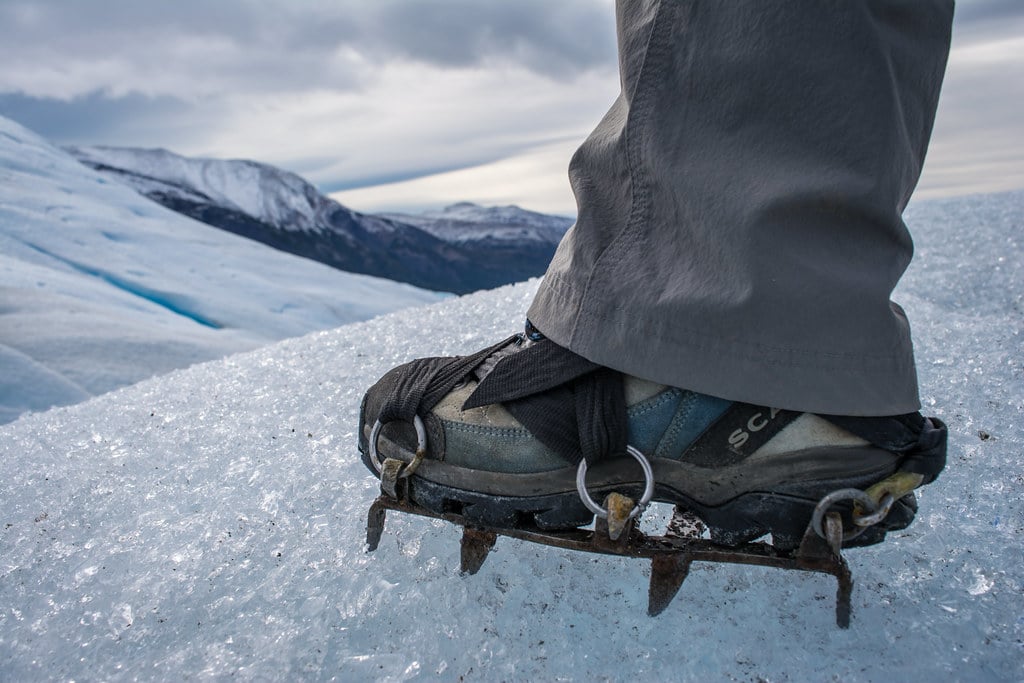 Well, it actually feels kinda cozy (kinda...)!
Well, it actually feels kinda cozy (kinda...)!As for security, I was not worried at all. Our guide knew what he was doing. We hiked far from the glacier’s edge, so we would not be part of a glacial calving (great to see, terrible to live). We started a short ascent under a sky that looked like a painting. Everything actually looked like a painting: the greenness of the surrounding mountains, the greyness of the water (which was still part of the Lago Argentino, fed by the glaciers) and the infinity of the ice’s whiteness. The sun reflection was strong, so sunglasses are strongly recommended if you do not want your eyes to melt like an iceberg.
Here and there, brown sediments seemed to dirty the ice. It pointed out the previous days’ violent winds, which had brought dirt from the mountains. Kim and I raised our hands in the air: it was the best way to feel the elements. We were in communion with the ice.
“Be careful!” We heard the guide’s voice as we passed a crevasse.
That was thin, but I could not believe how deep it was. Considering the glacier is 170m/558ft deep at some places, the idea to fall into THAT petrified me. Time was flying. We hiked for an hour and a half, but I felt I could have kept walking for 5 days (which might have allowed me to reach Grey glacier, in Chile’s Torres del Paine National Park!).
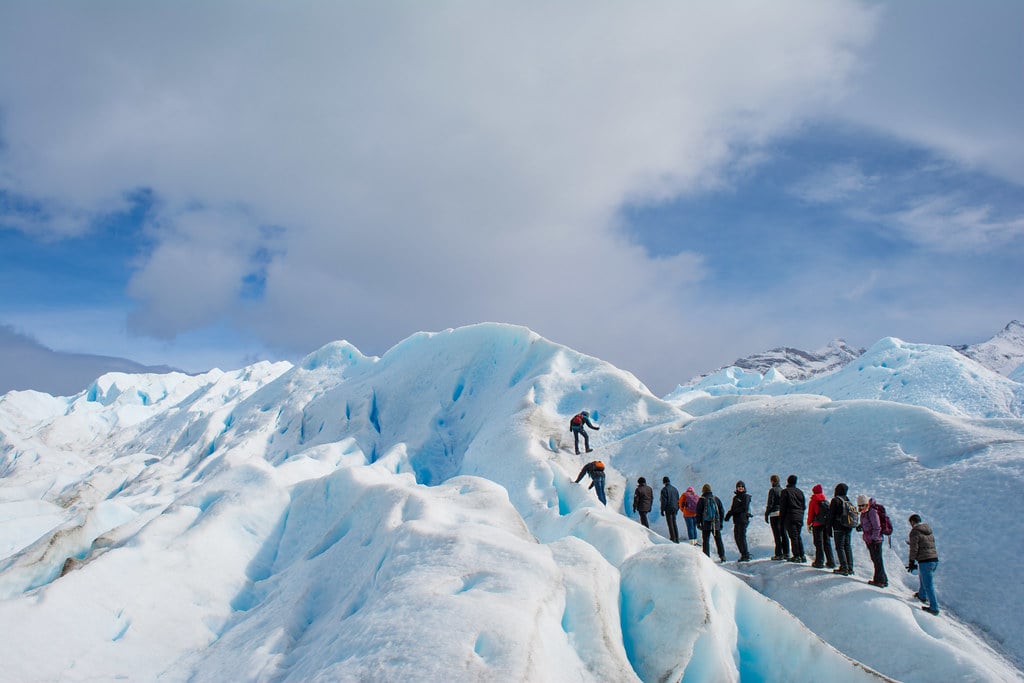 You'll get nowhere if you run!
You'll get nowhere if you run!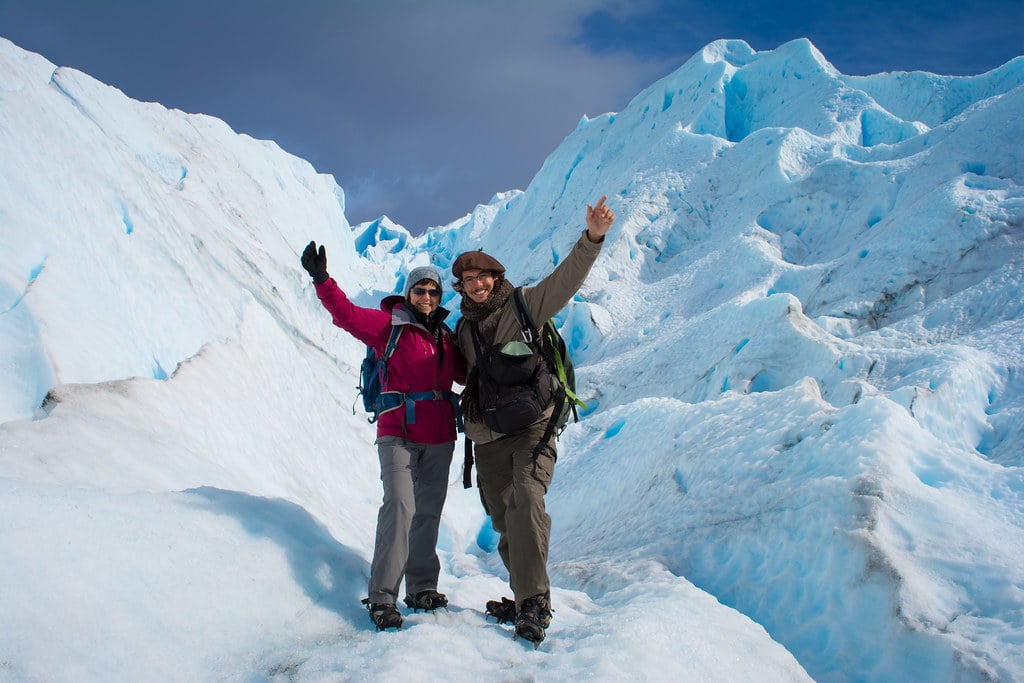 Kim & I on the white desert...
Kim & I on the white desert...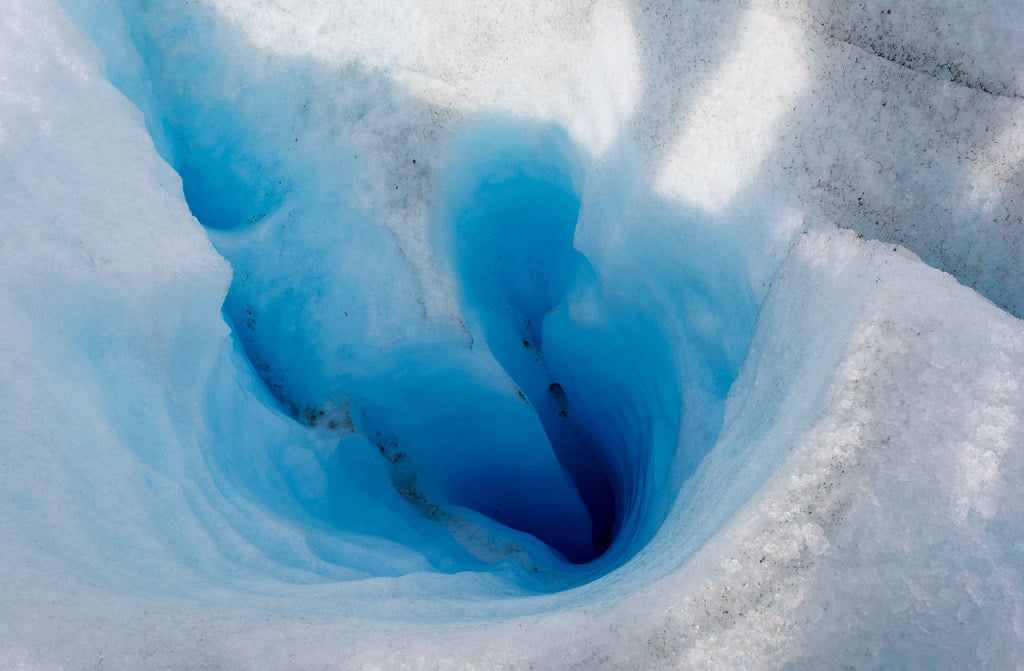 What I call a do-not-fall-into-this...
What I call a do-not-fall-into-this...As we were about to end the walk, we reached the most unusual bar ever.
A lonely wooden table was placed on the ice, with some empty glasses. Not empty for a long time, in light of the bottle of Irish whisky and the ice cubes. Wait a second…ice cubes on a glacier? These guys had thought about everything. They had pickaxed the glacier to remove some ice cubes and offer us the luscious “Perito Moreno cocktail”. That was the best - and wildest - whisky ever! Those who wanted no alcohol could still try it with water. “Salud!” We gathered with fellow travelers and exchanged in English, Spanish, French, Italian, Russian, Korean, etc. An international conclusion to an unforgettable mini hike on the glacier.
Kim and I chose a good rock overlooking the glacier to enjoy our lunch box. Silence was broken from time to time by glacier calving we could not see. If we could only see one from closer! On our way back to the pier where we had started the trip, I realized it was only 2:30pm. The gods had heard my voices, the day was not over: it was the “icing on the cake”! A 15-minute drive brought us to the most famous Perito Moreno Lookout.
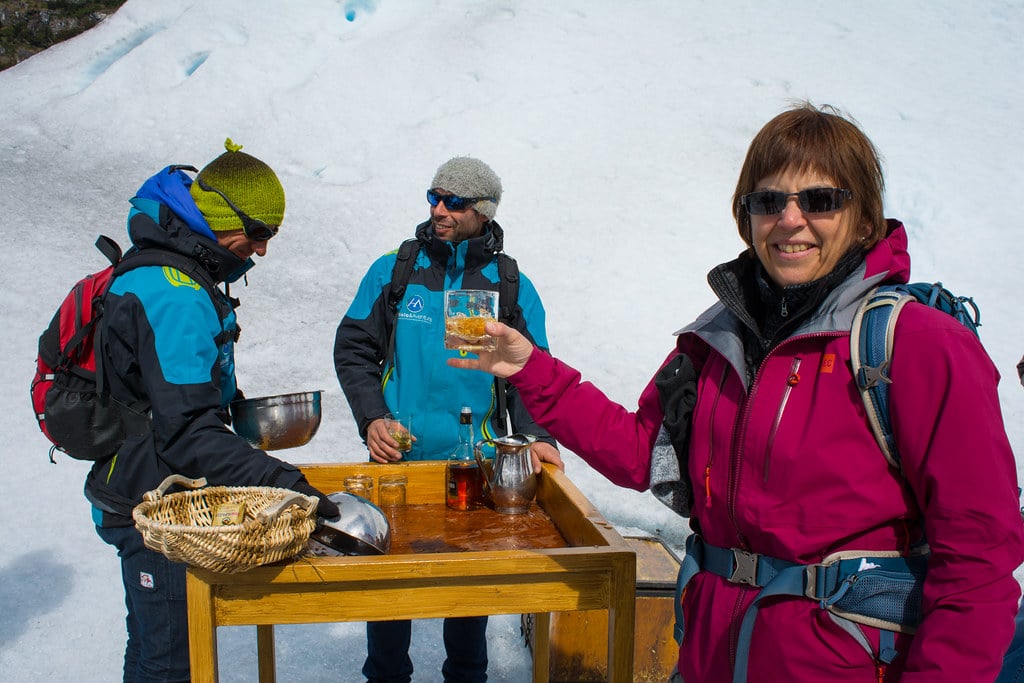 Salud!/Santé!/Cheers!/Prost!/건배!
Salud!/Santé!/Cheers!/Prost!/건배!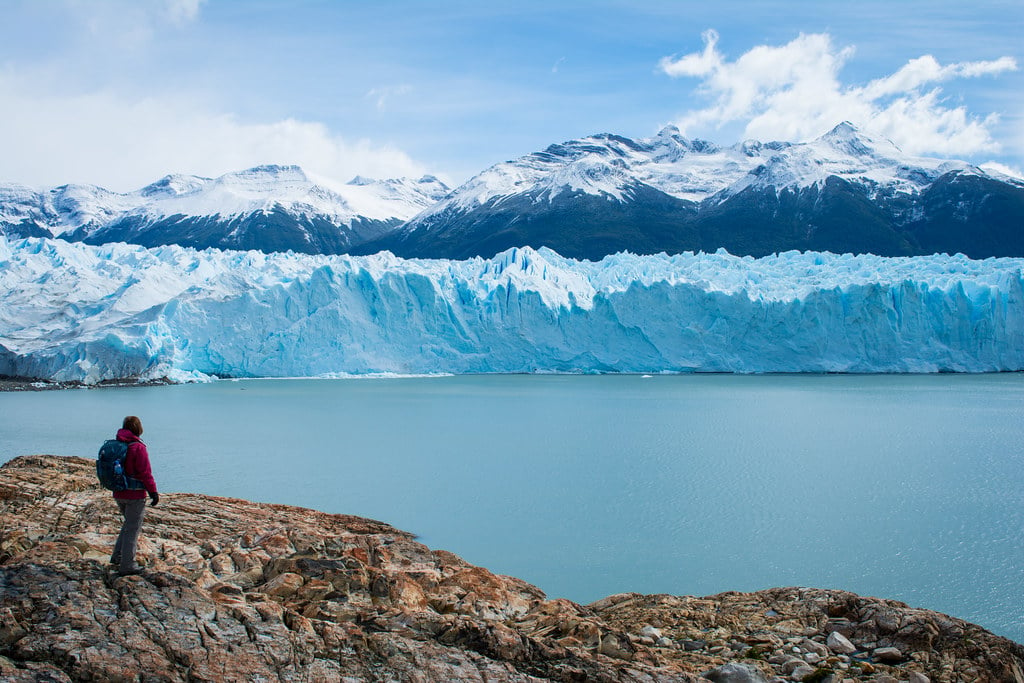 Hmmm...It could be a better view for Lunch (I'm kidding).
Hmmm...It could be a better view for Lunch (I'm kidding).An incredible gateway had been built to allow people enjoying a walk facing the ice field. From there, I almost felt I was flying above Perito Moreno. It was even better to see that after the ice hiking experience, just to have a global view of the glacier – and realize how vast it actually was. We had one hour to enjoy the view or go for a walk (here you have various options, including a tree-top walk if you prefer bird watching), but Kim and I chose the easy option: sit down and chill in front of Perito Moreno.
30% of Los Glaciares National Park is covered by glaciers.
If Perito Moreno is the most well-known (thanks to its accessibility), it is not the largest one. The Upsala Glacier (765km2/295mi2) and Viedma (978km2/377mi2) win the competition. The only (terrible) difference is that those last glaciers, like most glaciers in the world, are receding. Looking at the mystic beauty of the glacier, I suddenly thought about the marvel the world was losing. A 2004 study showed that about 83% of the worldwide glaciers were receding. That’s a frightening consequence of global warming with numerous impacts – and this is not only a loss for our eyes.
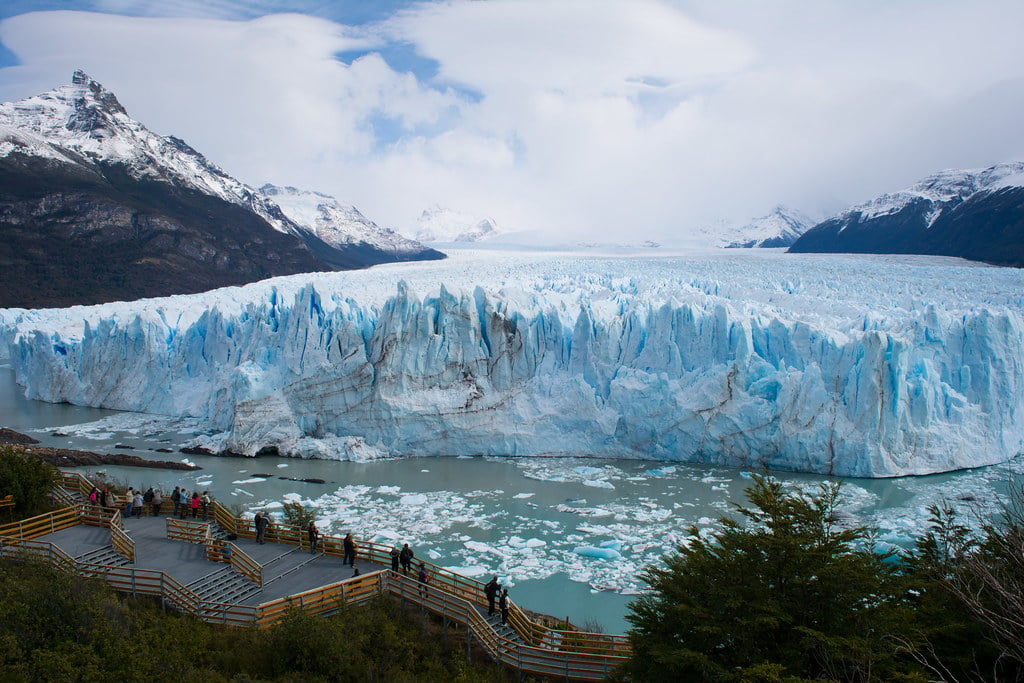 Big, colossal, hulking...I lack the words to define THIS.
Big, colossal, hulking...I lack the words to define THIS.So Kim and I enjoyed the moment even more. We were blessed with the weather, blessed with the moment, and blessed to witness the miracle of nature. We may have become glacier defenders; and experiencing that was a reason good enough to warn the world against global warming. “BANG”! The detonation sounded like a bomb. We heard people shout. Suddenly a large section of the glacier fell off. The water splashed. Perito Moreno was moving! No time for pictures: the glacial calving had been quick and loud. We felt it in all our body. Again, that was it…the icing on the cake!
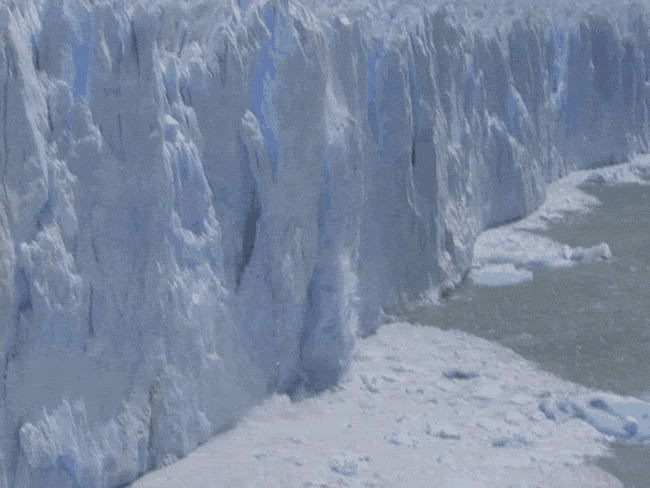
What about you, Kim? How do you feel now you became a glacier hiker?
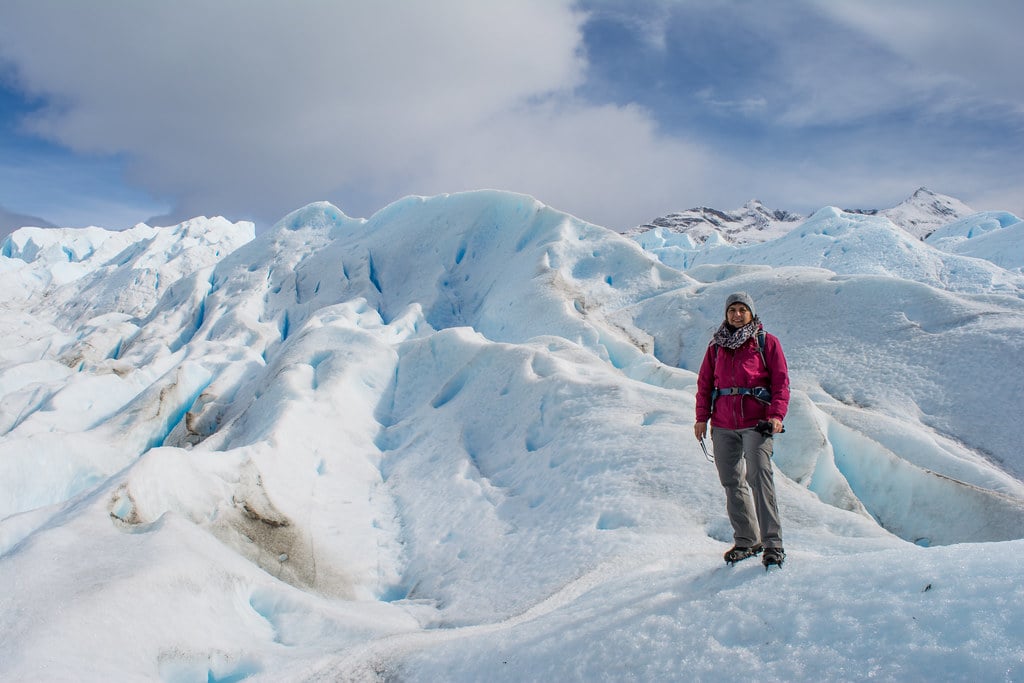 Kim fell in love with the ice!
Kim fell in love with the ice!Kim Lalonde, Canada: We are lucky to have fantastic glaciers in Canada, such as in the Rocky Mountains. Every glacier is different. Hiking on the ice may be the best way to experience nature on your own. It helps you appreciate how huge, beautiful yet incredibly complex glaciers are, and understand why this beautiful reserve of freshwater is important for the world.
Put on your crampons and hike on Perito Moreno or explore all the highlights of Los Glaciares National Park!

